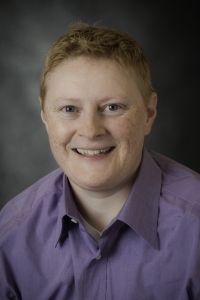Leadership Perspective: Prediabetes Tsunami — We Can’t Just Wait For It to Hit
Editor’s Note: This post is part of the “Leadership Perspectives” series on the Center for Total Health blog — a collection of guest blog posts from Kaiser Permanente leaders all about why we need to take a Total Health approach.
Today’s guest author is Trina Histon, PhD, senior principal consultant with the Kaiser Permanente Care Management Institute, who shares her thoughts on prediabetes.
Few would deny the burden diabetes places on those who suffer from it and their loved ones who support them as they manage this disease. Estimates suggest that Americans with diabetes spend about $6,000 out of pocket per year managing their disease, monies that could be put to other use if we had more comprehensive ways implemented nationwide to prevent diabetes.

Many liken the next wave of diabetes as a tsunami that will hit the United States and its citizens, so let’s play that analogy through. Recent weather patterns have shown how devastating tsunamis are in the world, so much so, that efforts have been put in place to create sophisticated warning systems. So should another tsunami strike, countries will have advance warning so they are able to evacuate low-lying coastal areas and get people to safety.
In the U.S., the screening equivalent of that warning system for diabetes is an a1C test and the ADA has established a range of 5.7-6.4 as placing the individual in the “prediabetes” range. There are other tests, such as fasting blood sugar, but more and more health care is moving away from fasting blood work as it’s hard for people to fast for long periods of time. So this a1C range is our early warning system, and like most systems, it’s not perfect. In the literature this year, a few articles that discuss diabetes care and BMI have called into question the value of addressing prediabetes. These critiques are valid and perform an important function in both advancing the science and dialogue of where we want to spend our precious health care dollars.
Preparing for a Disaster We Know is on the Horizon
Kaiser Permanente today has 600,000 members with diabetes. We have also developed a cohort of just under one million members with lab values in the prediabetes range. Rather than wait for perfect science on exactly who needs an intervention, we feel ethically that if someone has a risk we should inform them and partner with them to address that risk, should they choose. One of the complexities of determining prediabetes risk is the prediabetes range has varying origins. For example, an a1C of 5.8 does not necessarily mean you will convert to diabetes, but you are at higher risk, and clearly are showing early signs of beta cell damage. What we do see is those with an a1C of 6.0 and higher and with BMIs in the obese range are most likely to convert. We are looking at our own data to see how we can further subtype the prediabetes risk spectrum and then subtype the interventions.
The Powerful Effect of Lifestyle Changes
The good news is lifestyle is the first line of treatment. The original diabetes prevention program (DPP) and subsequent translation trials show that those who lost 5 to 7 percent of their weight and increased their activity to 150 minutes/week prevented or delayed diabetes in 58 percent of participants over a three-year period – and 52 percent over 10 years. For most people, that translates to a 12- to 15-pound reduction, more attainable than the 30-40 percent of weight people might like to lose as reported on consumer surveys.
